It’s been a busy year for Yoko Taro, with a handful of directorial projects including the launch of Nier Re[in]carnation and the release of the highly anticipated remake of beloved title Nier Replicant ver.1.22374487139 before rounding off with his latest adventure, Voice of Cards: The Isle Dragon Roars. Yet unlike those first two, Voice of Cards is significant in that it doesn’t carry the baggage the other two do with already well-established mythos and legacies. Voice of Cards: The Isle Dragon Roars is a step in a new direction for Taro that presents a memorable and fun experience that delivers on the signature storytelling Taro is known for, yet it’s also relatively tame compared to his previous work.
Voice of Cards doesn’t seek to challenge the confines of its medium but rather embraces them. Much like its prominent Dungeons and Dragons inspirations, the presentation of the story and its systems are very much in every essence of the word, traditional. From the get-go, Voice of Cards welcomes you with the charming words of its “Game Master” guiding you through its options and the setup being a recounting of your “heroic tale” makes it all the more charming. The point here is, the world of Voice of Cards is, while traditional in setup, clear-cut in its intentions to lull you in with the familiarity of the situations it presents within the story mirroring several fantasy tropes. Voice of Cards is familiar, cliché at times even, but more importantly, it is comfy! The whole experience from start to finish is designed to make you feel at home with its “tavern feel” and once you’ve fallen into that rhythm, it’s smooth sailing from there on out.
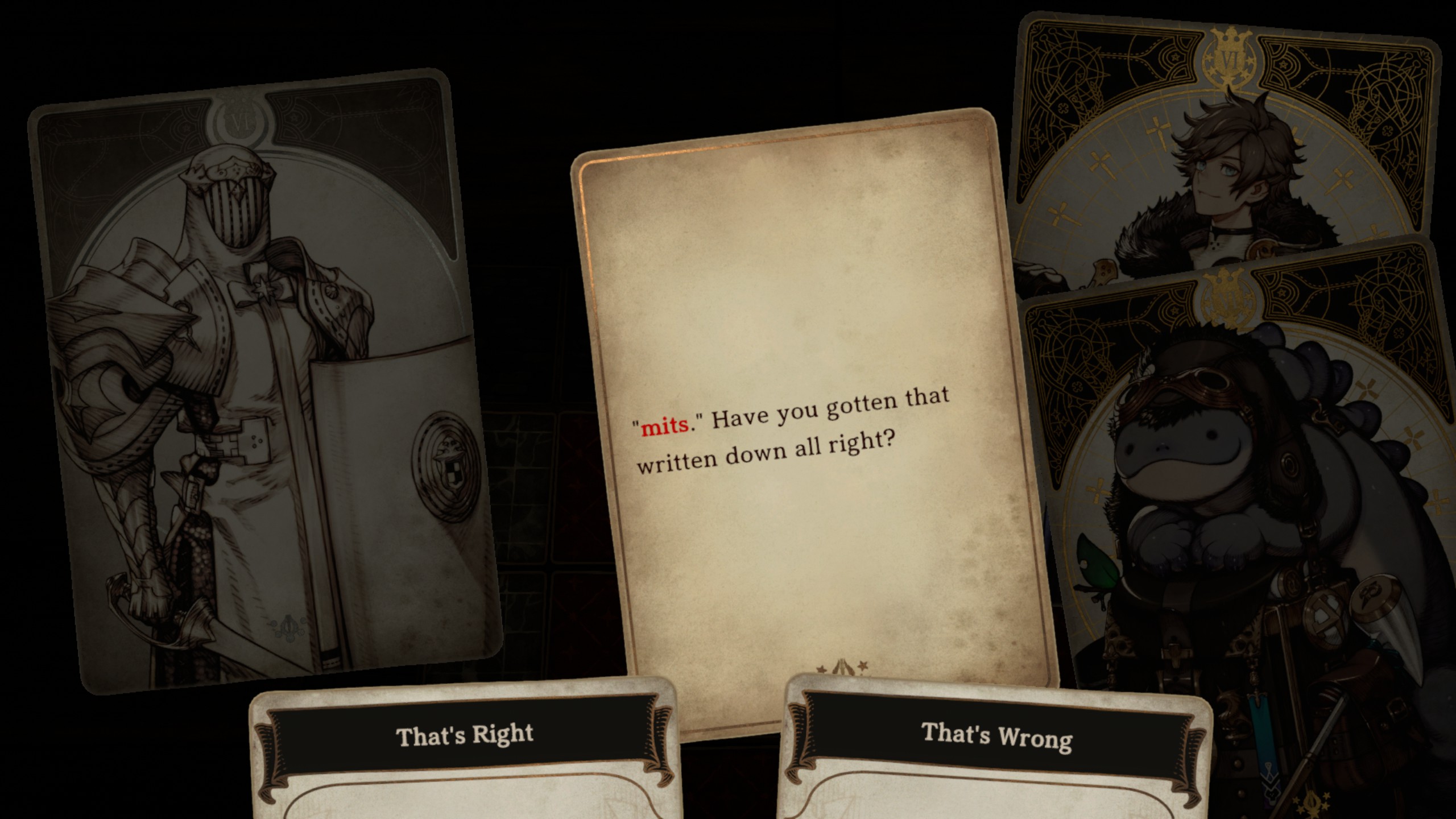
The writing is your typical fantasy setup with you as the main character, joined by your monster companion Mar, and Melanie, a witch whose reasons for accompanying the journey are seemingly more personal than yours, on a quest to slay the Dragon threatening the region in return for a hefty reward from the queen. It’s a nice underdog story as your ragtag party faces off against powerful foes while gaining new companions along the way that’s starkly contrasted by the party’s constant race against time with another trio of heroes known as part of the Ivory Order who too are after the dragon. Yet despite this all sounding fairly cliché, Taro’s storytelling plays a large part in really enhancing the charm of the writing. The main character gets plenty of opportunities to pick between dialogue options at certain points and it’s moments like this where Taro’s playfulness shines in each option often being your typical virtuous protagonist response or an extremely snarky comment – both of which provide equally entertaining results that helps enhance the feeling of Voice of Cards being your story.
Another great aspect of the writing that’s a bit more in line with Taro’s signature dark humor is here in the form of “flipside stories”. These stories are unlocked by fulfilling various conditions within the narrative or talking to certain NPCs in certain villages that often paint a vivid portrait of the world of Voice of Cards – serving as great world building while also helping to flesh out characters that don’t get explored enough (which for the sake of keeping this spoiler-free I’ll refrain from mentioning). Some are dark while others are heartwarming and their contrast helps to emphasize the dichotomy of beauty and bleakness of its world.
Overall, the writing here is simple and charming for the most part. Barring some later developments within the narrative that might be contentious for some, it’s a memorable ride throughout with a great supporting cast that, despite not having as much character depth as some of Taro’s other characters, fit the narrative well enough to not leave any ambiguous intentions behind. Voice of Cards is a simple story with complex themes and wonderful characters woven into the tapestry of its beautifully realized world that knows when to balance its more humorous and relaxing moments between its much more emotional gut punches.
As for the gameplay itself, similar to other smaller budget titles from Square Enix in recent years, it’s rather simple, opting for a traditional turn-based card combat system that’s easy to pick up yet easy to master given the little challenge most of the game provides. It wasn’t an exaggeration to say earlier that it’s smooth sailing once you get into the rhythm of the game as the quicker you get used to the rules and systems the game establishes fairly early on, the sooner you’ll find yourself completing encounters in one or two turns normally. Occasionally, some battles will have “Happenstance Cards” that add a unique condition to each battle such as “double exp” or “fire damage is increased for both enemies and allies”, but these often have little effect on the overall difficulty of most fights with some working in your favor in letting you finish encounters much faster than they would be normally.
Voice of Cards is not a challenging game (save for a few select encounters including the final boss), but what’s important is that while simplistic in structure, the game itself is still enjoyable. It was hard for me to get tired of skirting on by encounters often completing most of them in one or two turns through a good synergy of utilizing party member’s skills in conjunction with each other to create devastating combos that often crushed enemies before they had a chance to fight back. While the pacing of these encounters does feel quite snappy, the slower animations of some more powerful moves do tend to lose their appeal as the game goes on and you realize how much time they take up within the process of progressing through each area fight by fight. It’s a nitpick in hindsight but remains an issue that persists at the end which in turn, might make even those with generous amounts of patience somewhat affected by it. On another note, the exploration within Voice of Cards is one of the strongest gameplay factors because of how well it incentivizes perusing its maps and how it plays into all the other features of the game. Exploration within Voice of Cards is grid-based, with a single metal piece representing the player on top of a playing board recreation of the game’s various areas that greatly enhance the table top feel of the game’s progression.
Exploration feels rewarding in Voice of Cards not only because of the traversal being beautifully presented, but also because of the various side quests sprinkled within its densely packed zones that often leads you to explore other parts of the map – sometimes rewarding you with valuable gear or interesting side dialogue. Beyond chests and various terrain tiles, the overworld also has event tiles that are reminiscent of rolling checks in Dungeons and Dragons. A dice roll or dialogue option often serves as the determining outcome an event. These checks show up frequently as you explore various areas, but not often enough to be a hindrance. If anything they’re something to look forward to.
Much like the random chests scattered across the map, the event tiles are good incentives to fully chart it and also add enough variety to exploration to make the overall process that much more engaging beyond combat encounters. It’s also worth noting that, aside from gameplay, there’s a fair amount of customization to be had with each of the game’s components such as the table, card art, card backs, and so on. It’s a small detail but it’s a nice way to let players further personalize their experience.
Voice of Cards is a card game at its very core so it only makes sense a lot of the aesthetics revolve around cards as well. The tiles on the overworld are cards, the status menus are cards, the NPCs are cards… you get the idea. While limited in presentation, Voice of Cards relies on the charm of its wonderful designs by Drakengard series veteran Kimihiko Fujisaka, whose art graces every aspect of the character art. Further enhancing the experience, is frequent collaborator, Keiichi Okabe, whose enchanting score breathes life into the world of Voice of Cards. Both of these elements combined with Taro’s captivating storytelling help to shape a casual and enjoyable experience that feels best enjoyed with the comfort of a warm drink and the company of a warm blanket to follow the story as it proceeds with its ever meditative journey.
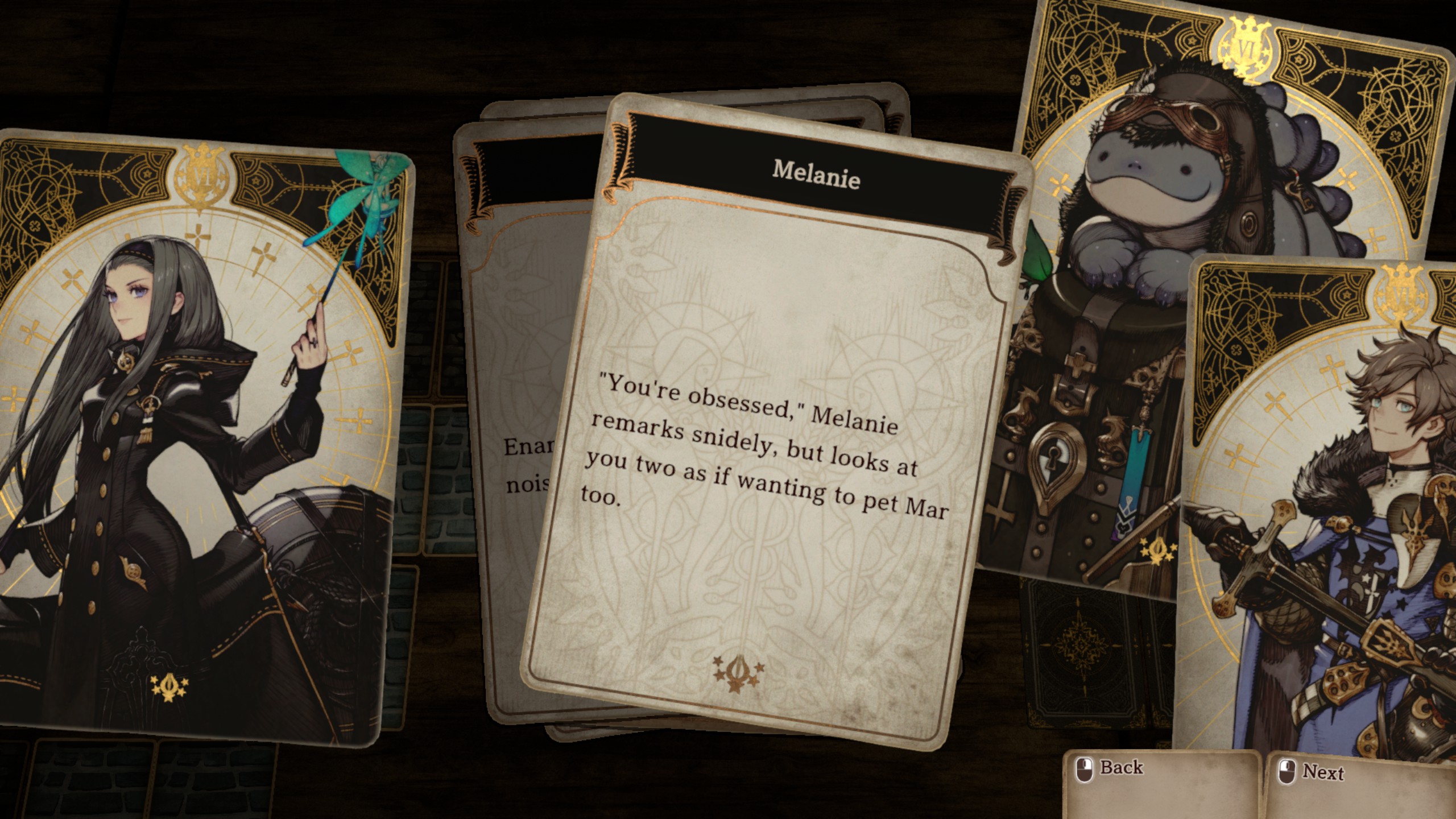
Now with all the cards on the table, Voice of Cards: The Isle Dragon Roars is a lovingly crafted experience but not without its own flaws. The combat may outstay its welcome near the end but the story certainly does not. The experience in total took me around 12 hours from start to finish and that involved going out of my way to level everyone up to max and complete each area in its entirety. Yet despite that short length, it doesn’t come without its benefits as the story of Voice of Cards is one of Taro’s most focused narratives in a long while with very deliberate and methodical pacing.
While Voice of Cards is certainly noteworthy in that regard, I think those going into Voice of Cards expecting a similar experience to that of his past work like the Nier series might be disappointed with how muted it is in comparison, but maybe that’s okay. After all, Voice of Cards is far more concerned with you being comfortable along its journey, and while it doesn’t try to do anything too ambitious it certainly still has moments that’ll tug at your heartstrings and rejoice in triumph. There might be a lot here that could be expanded on, possibly in potential sequels, and Voice of Cards: The Isle Dragon Roars feels like a good start for that. It’s been a busy year for Yoko Taro indeed, but in spite of it all, he’s still got it.
Disclaimer: PC via Steam version reviewed.

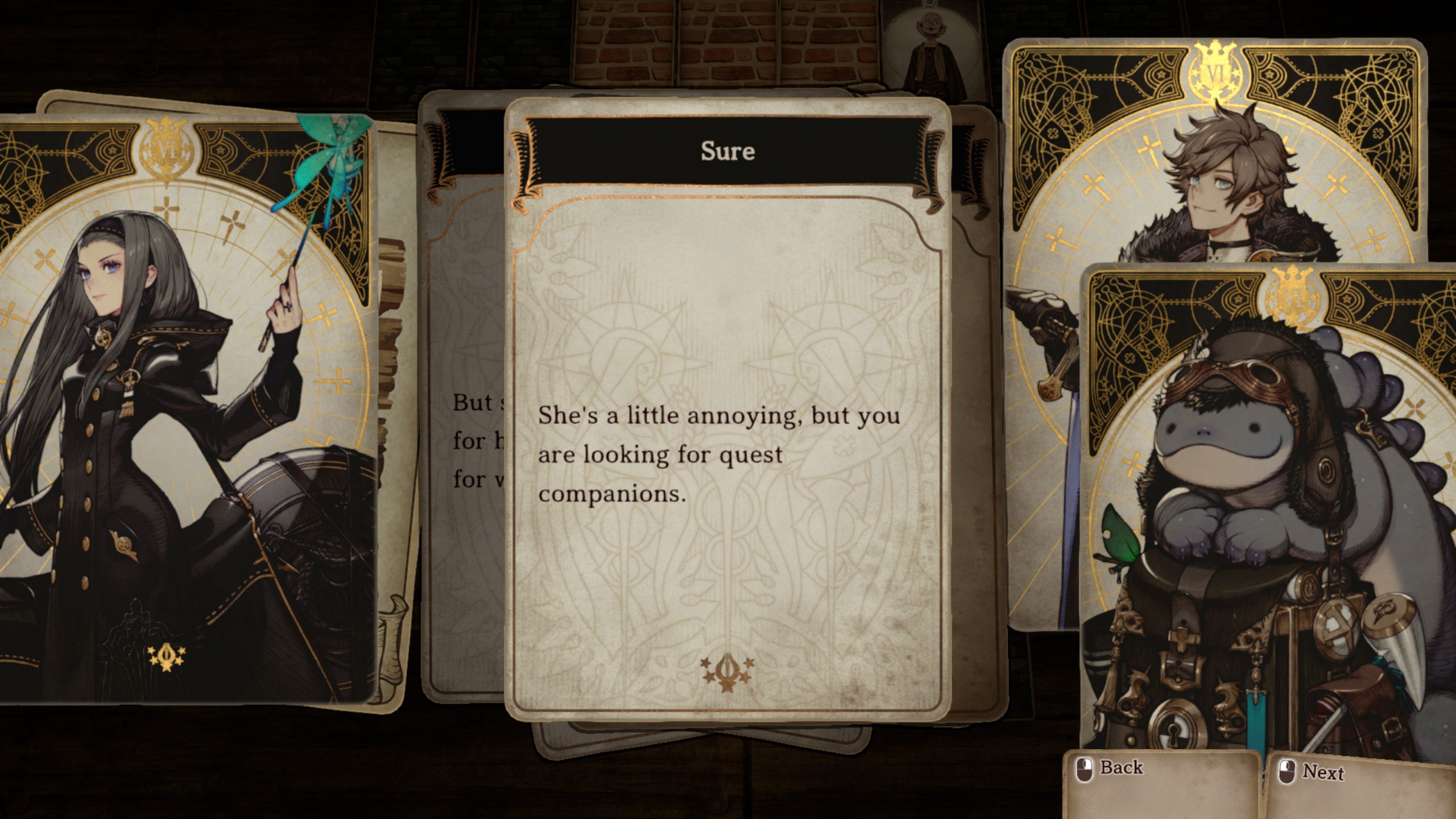
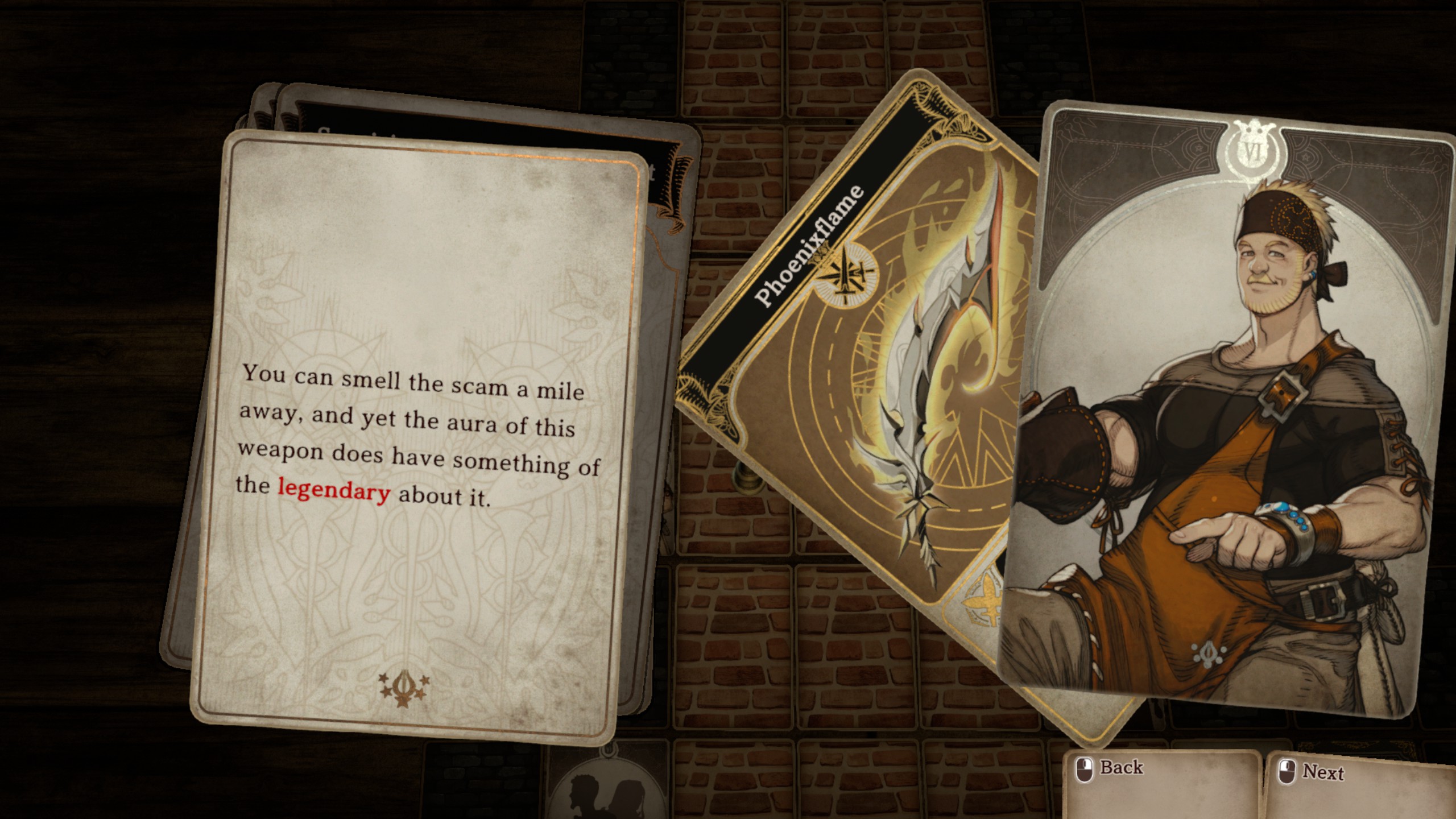
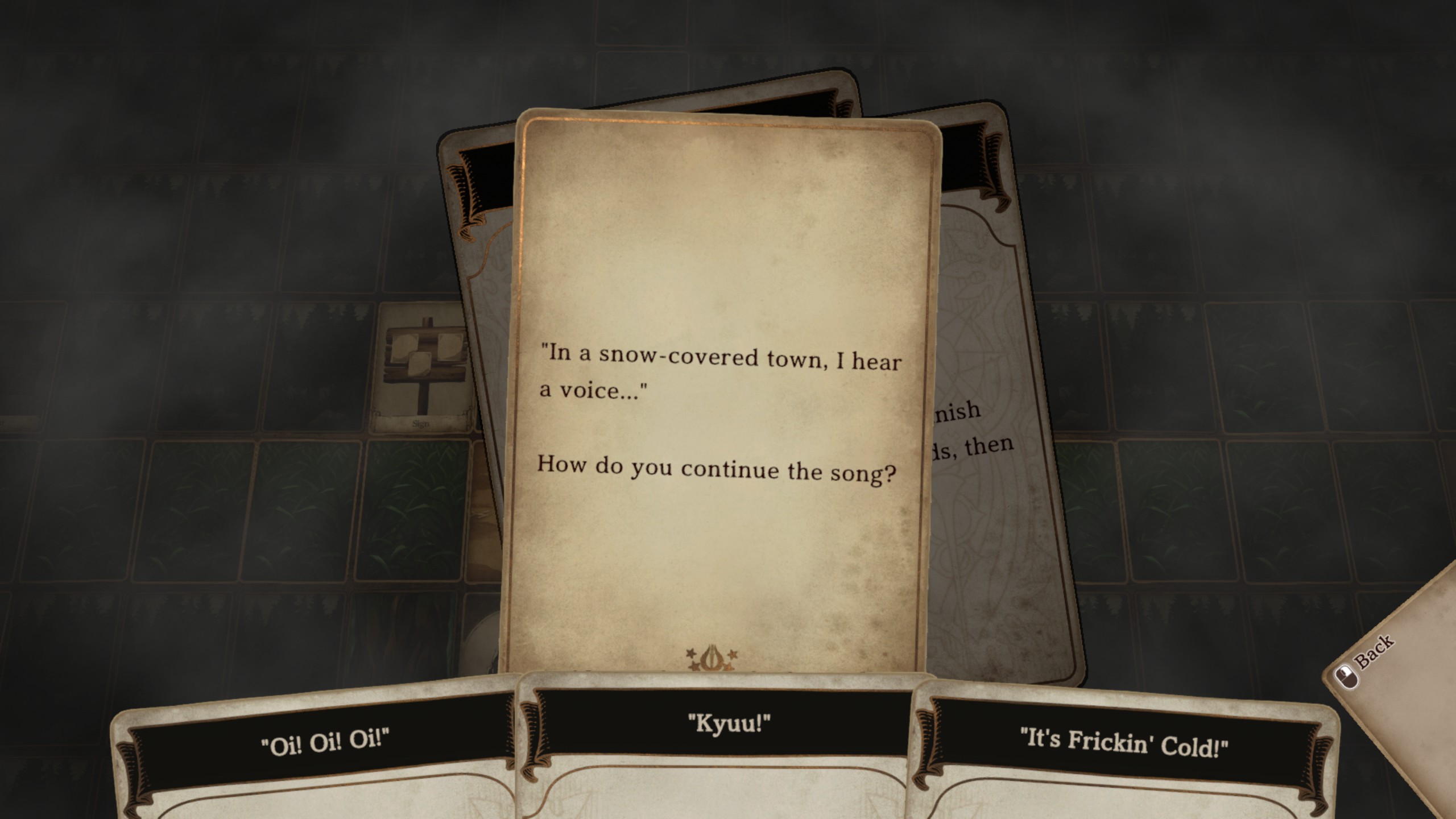
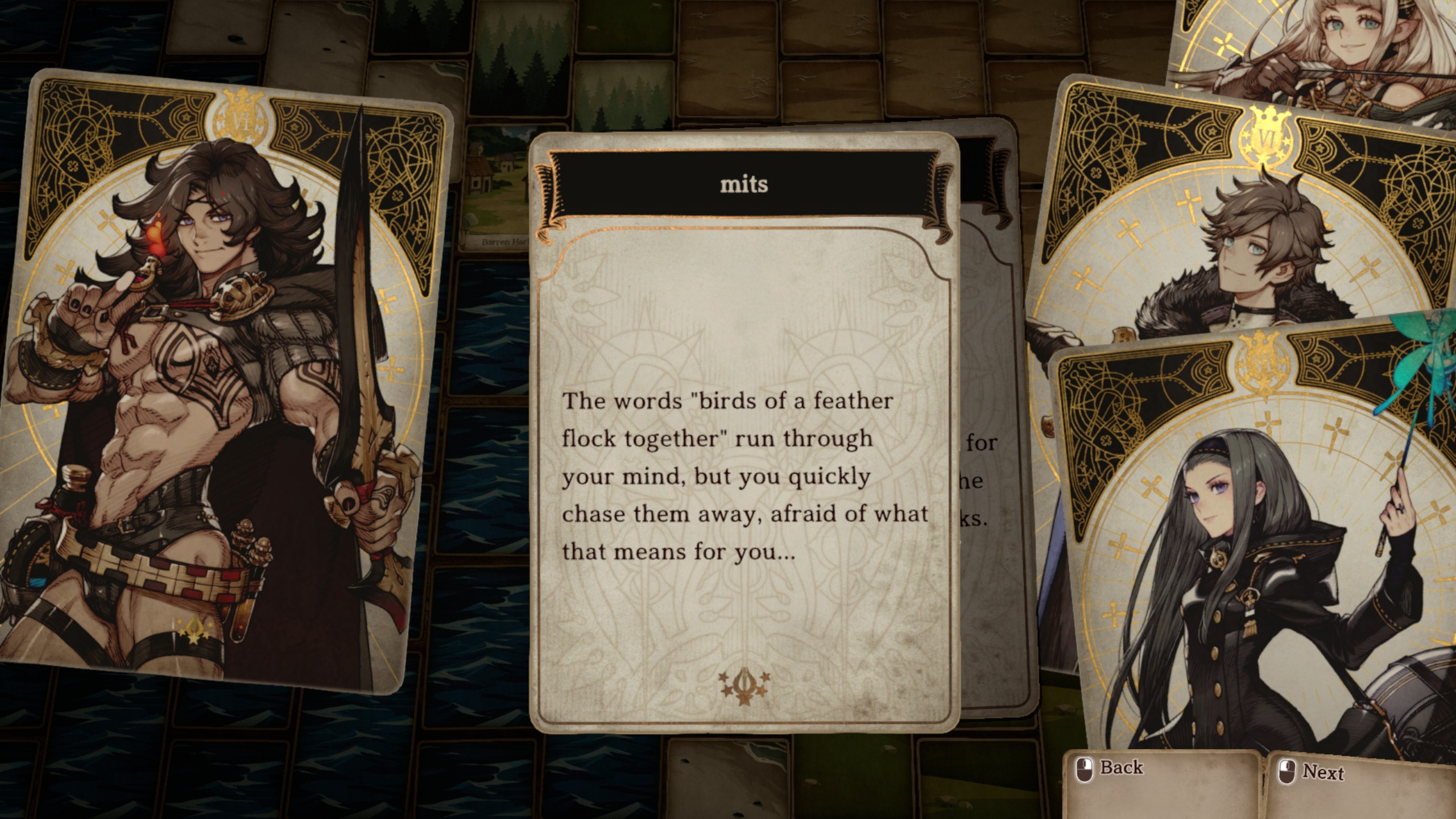
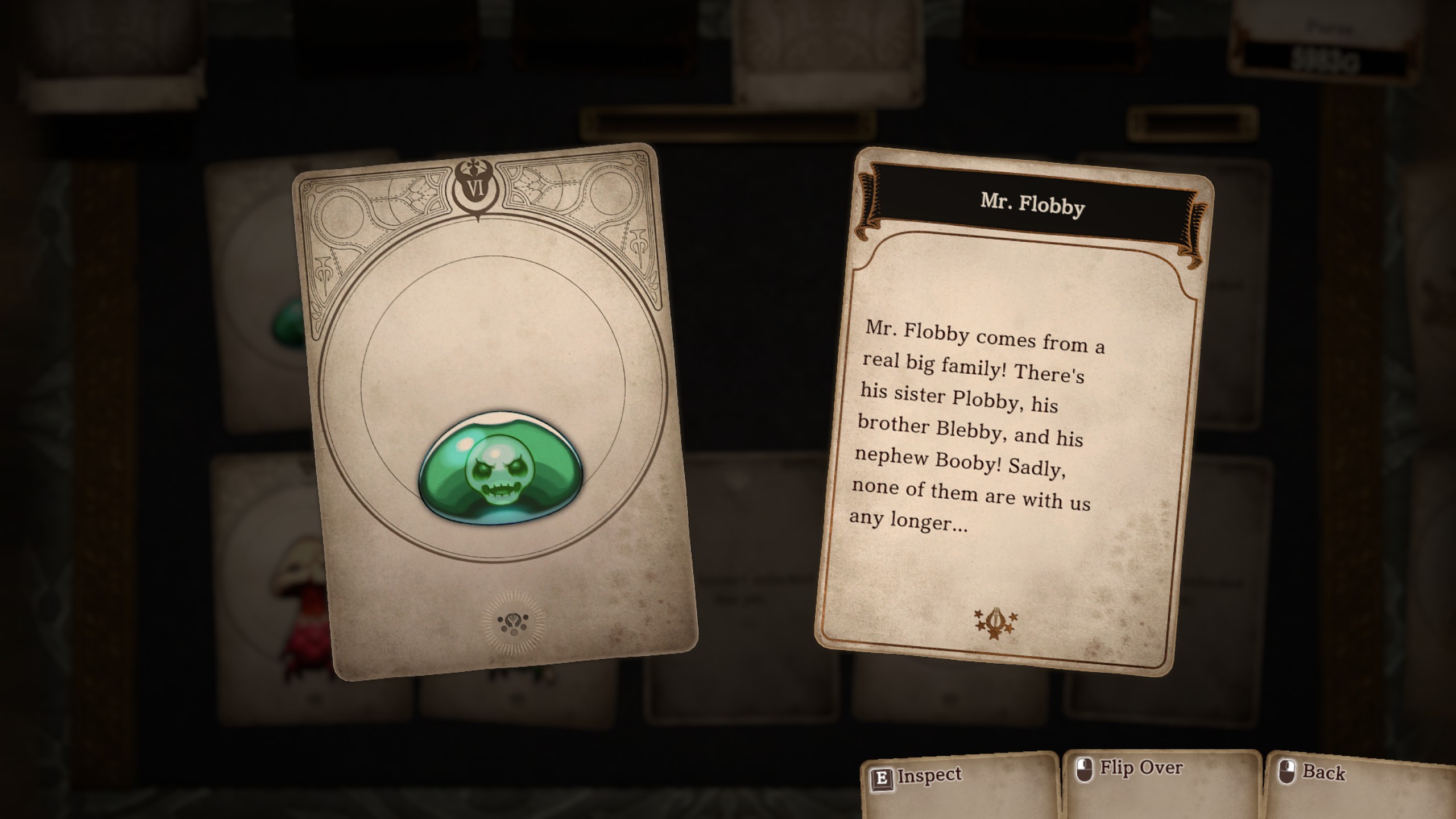
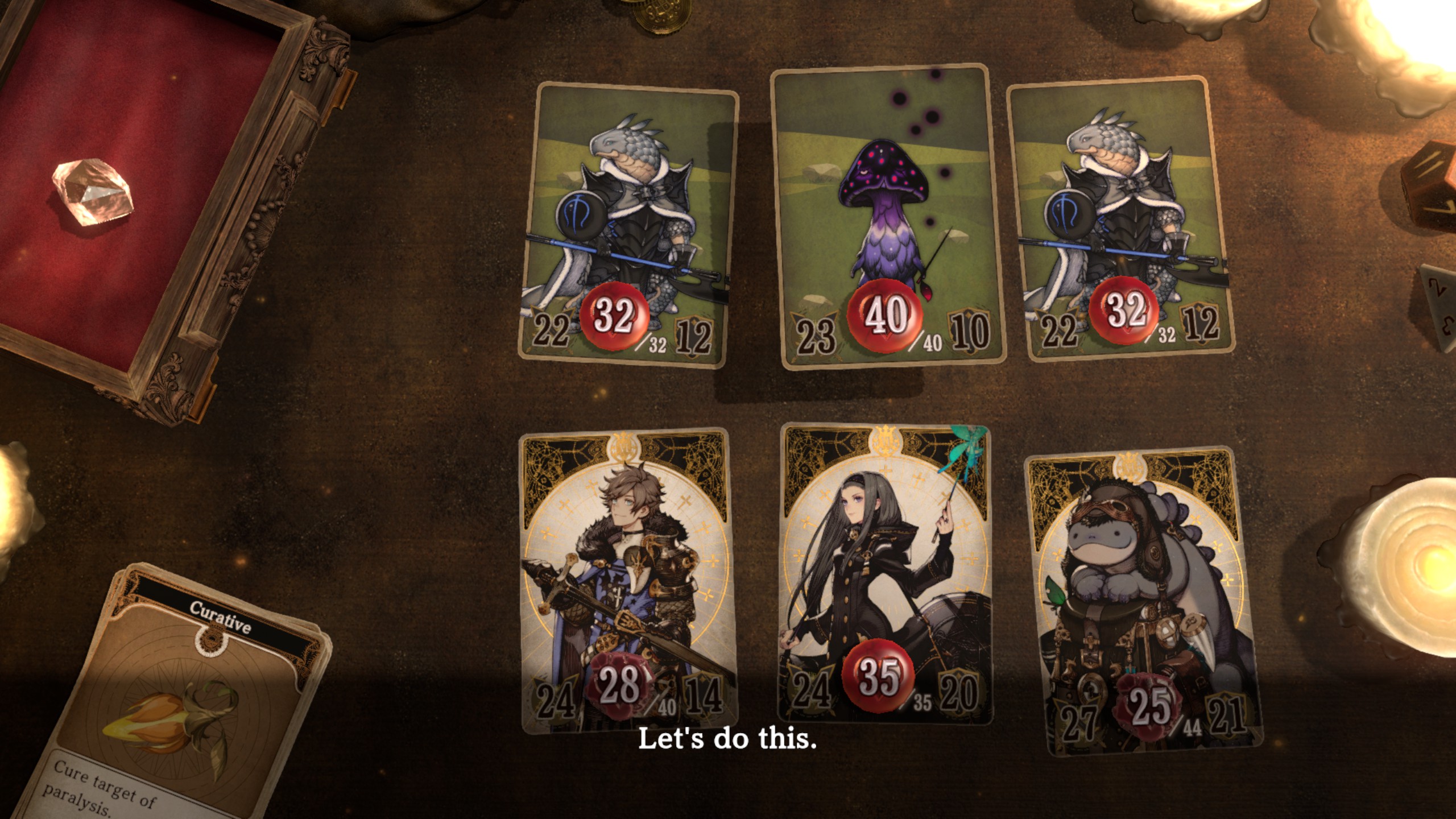
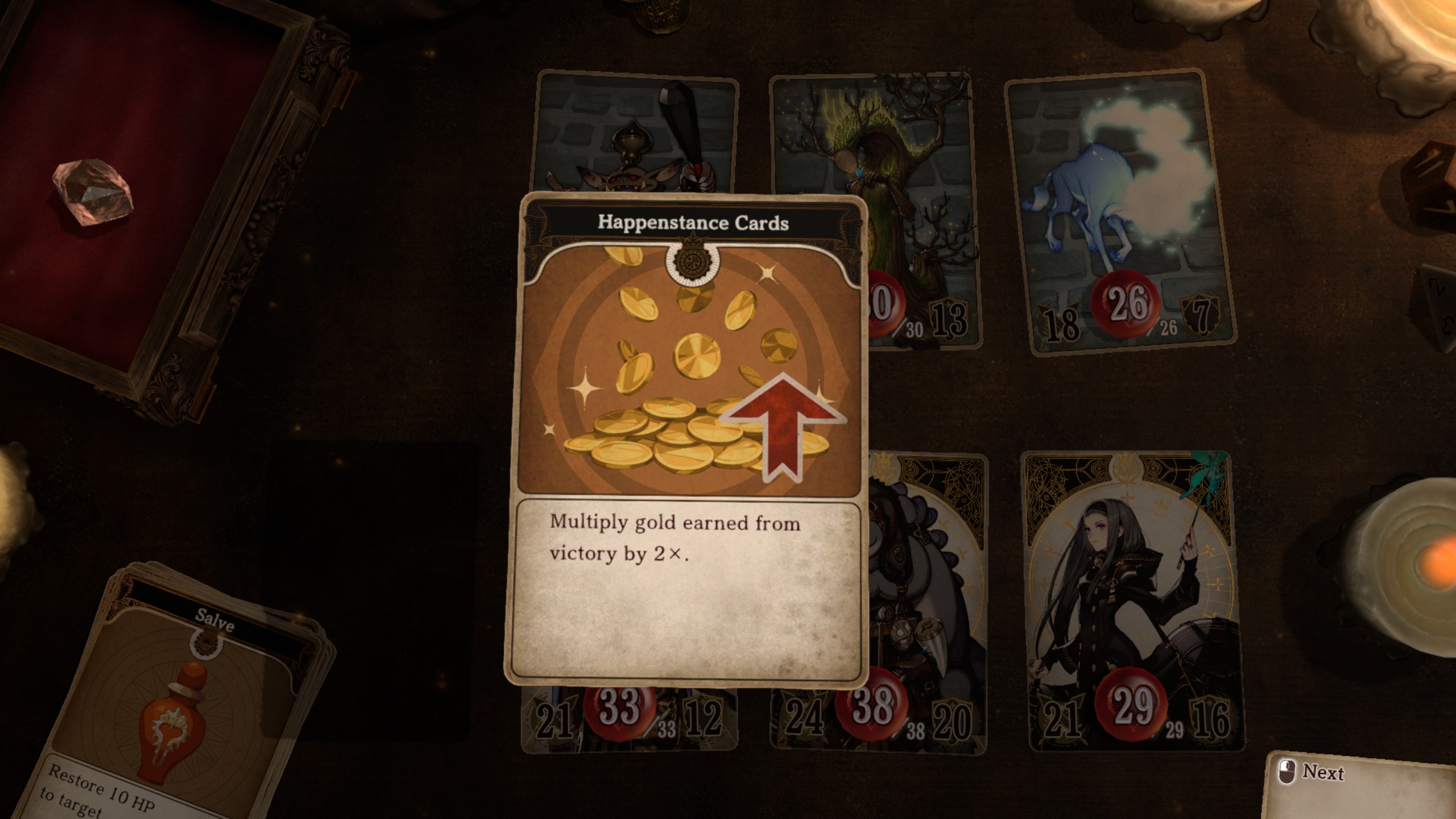
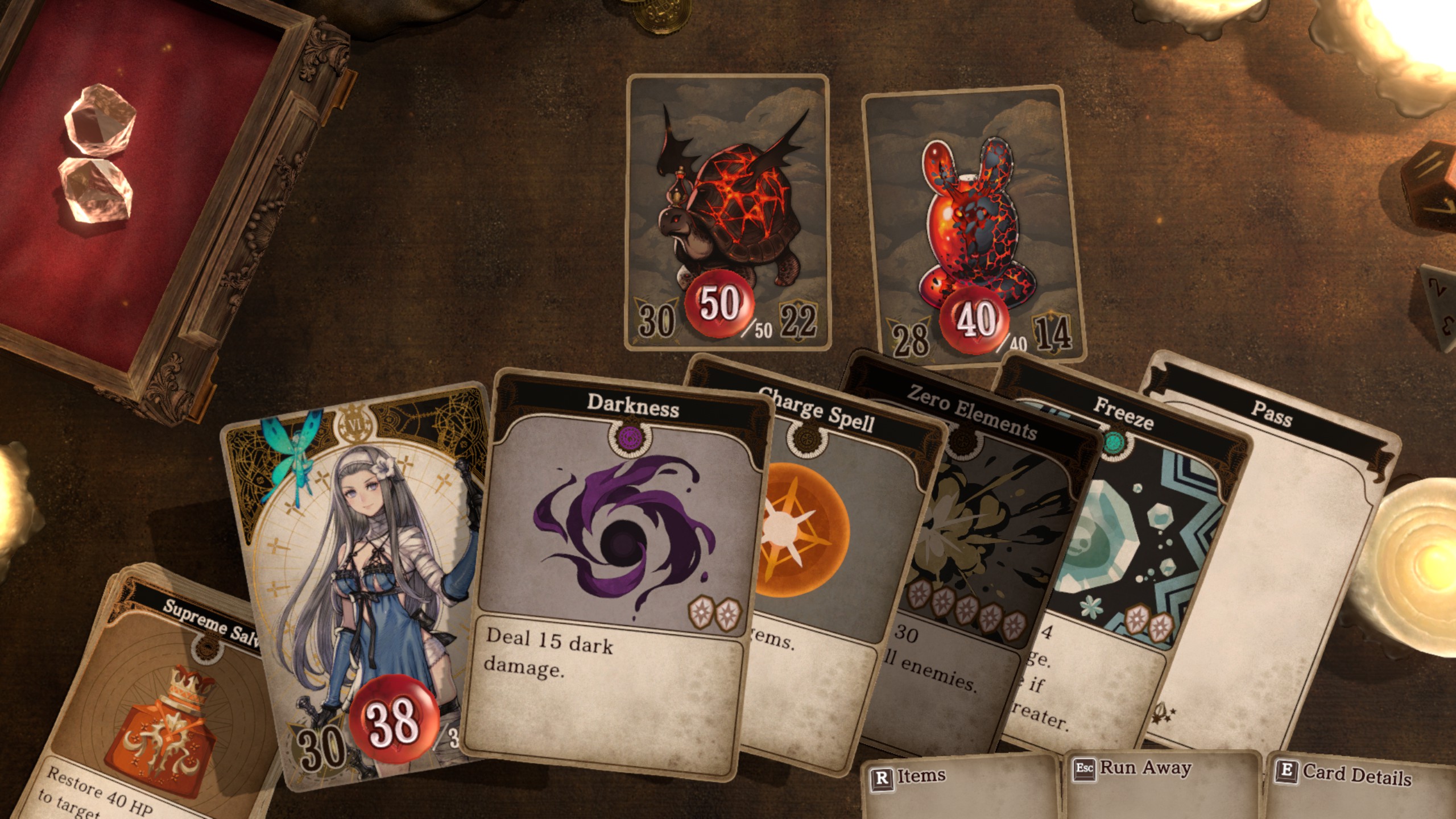
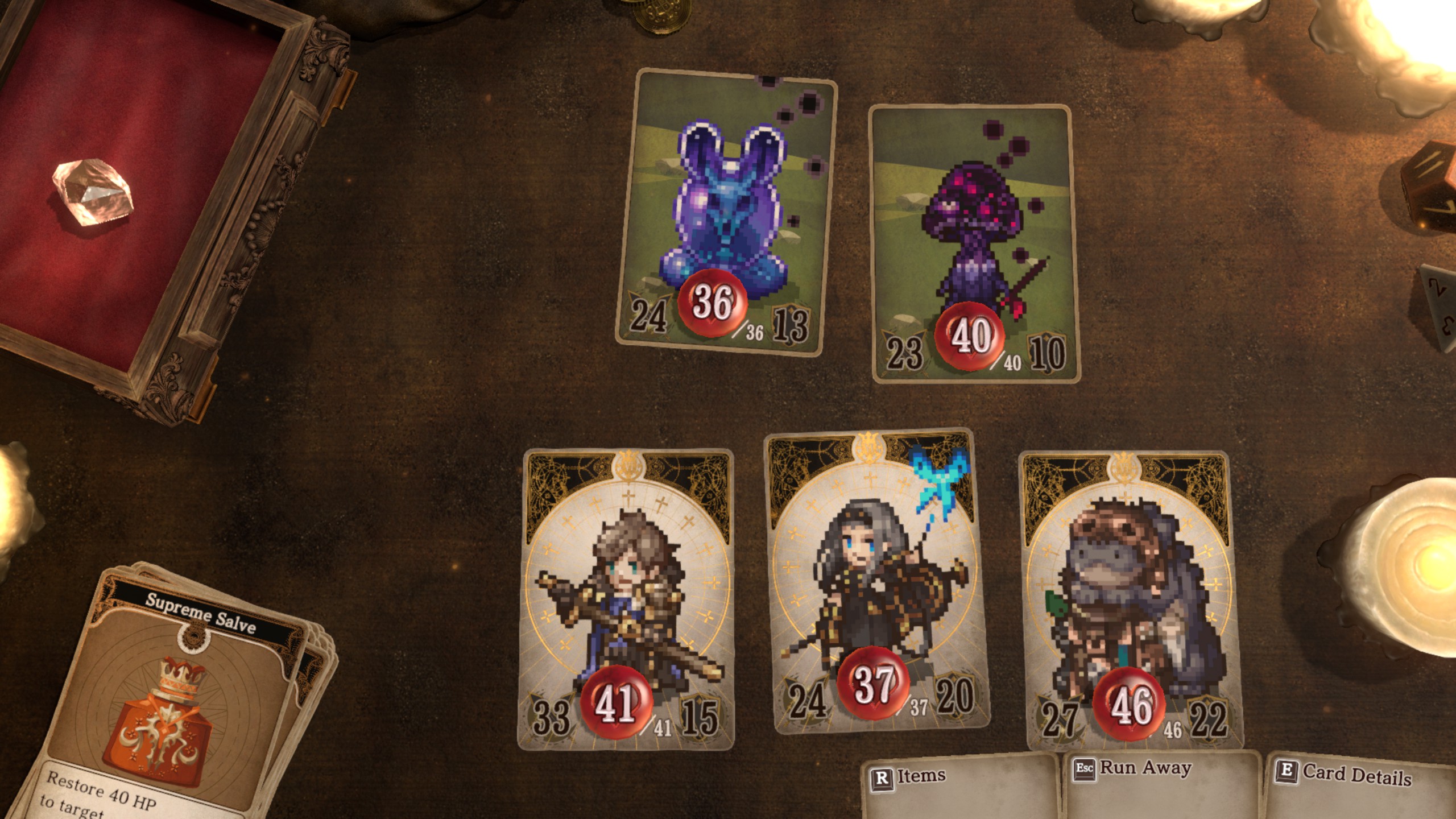
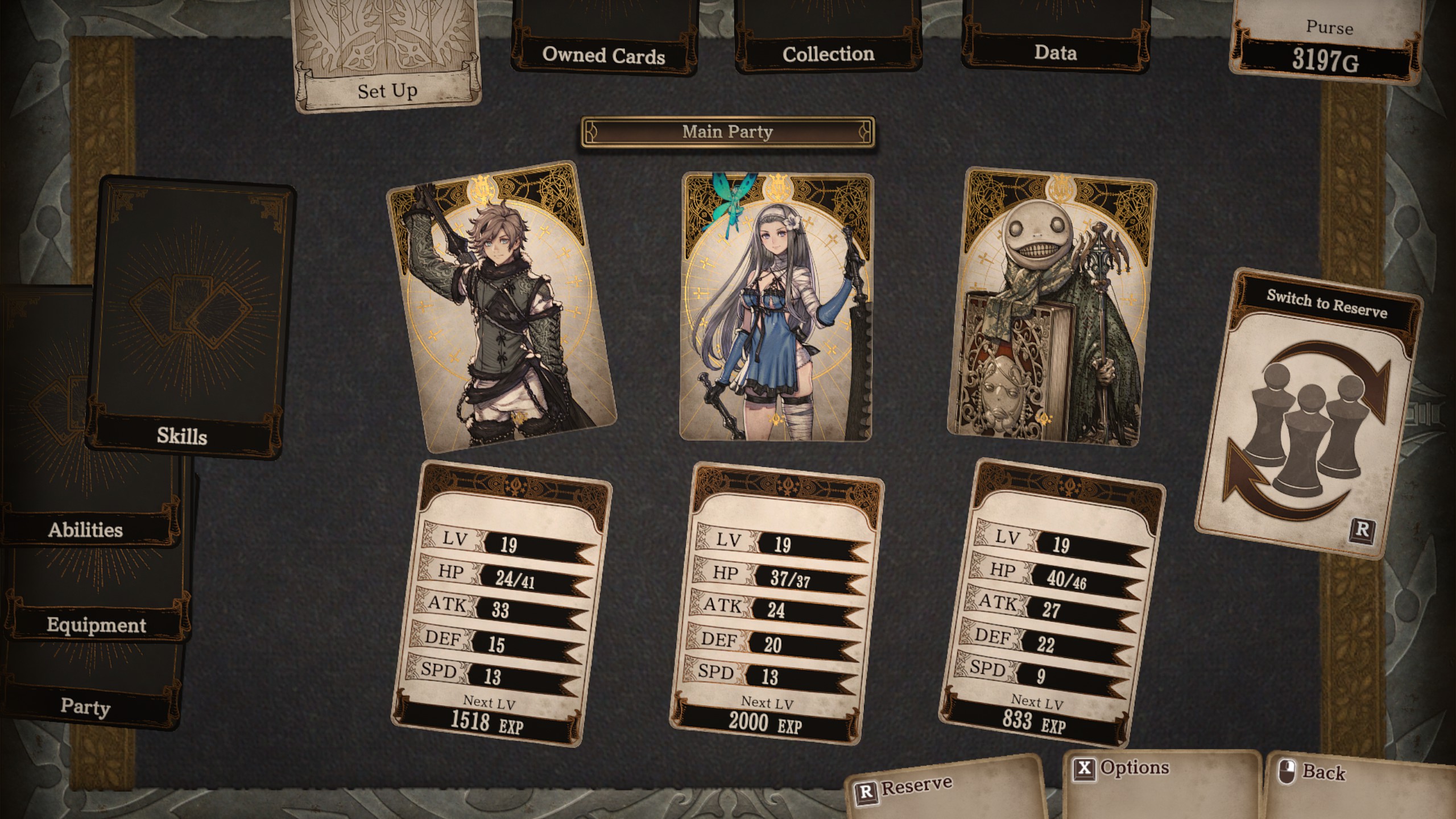
Recent Comments